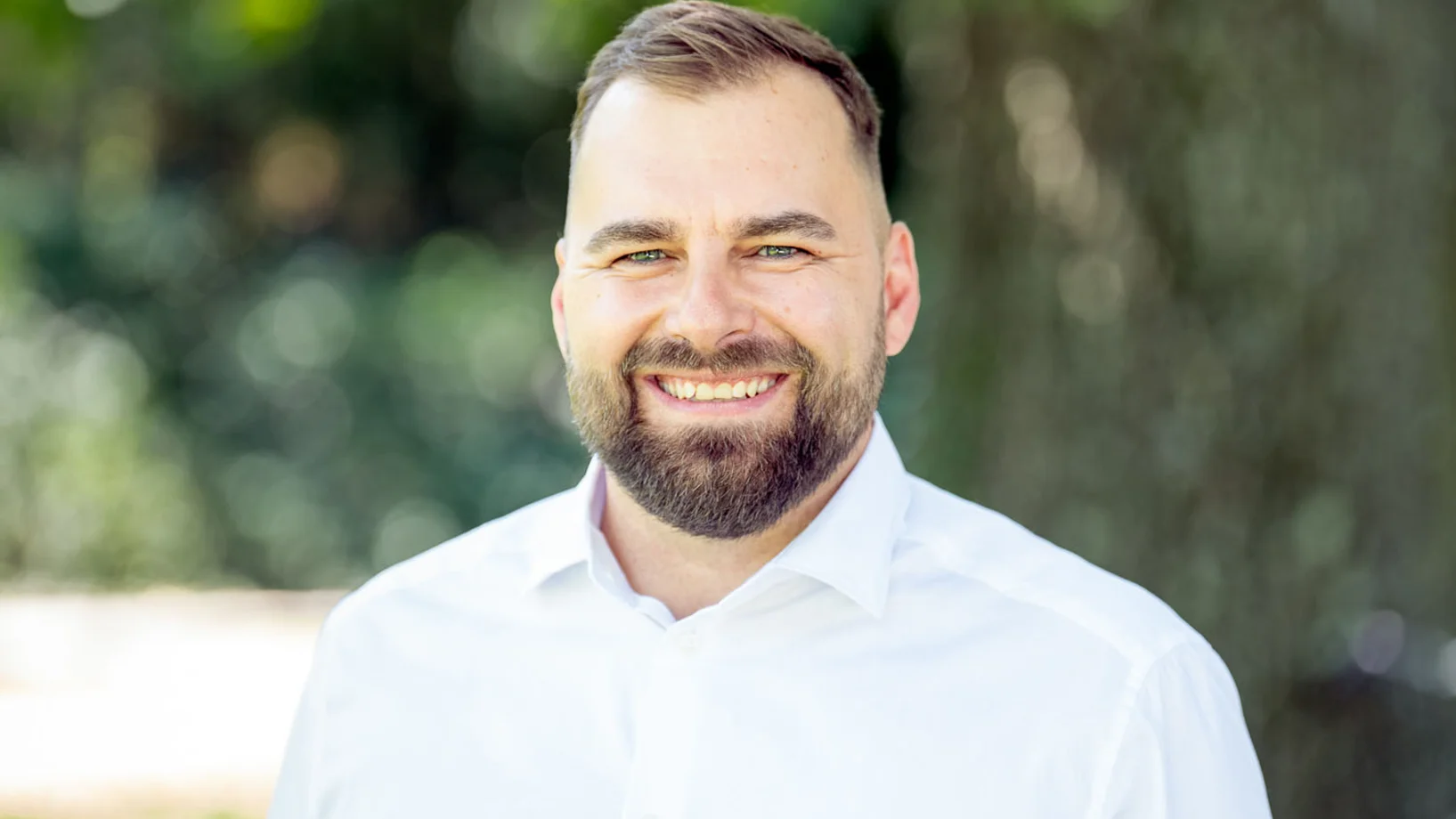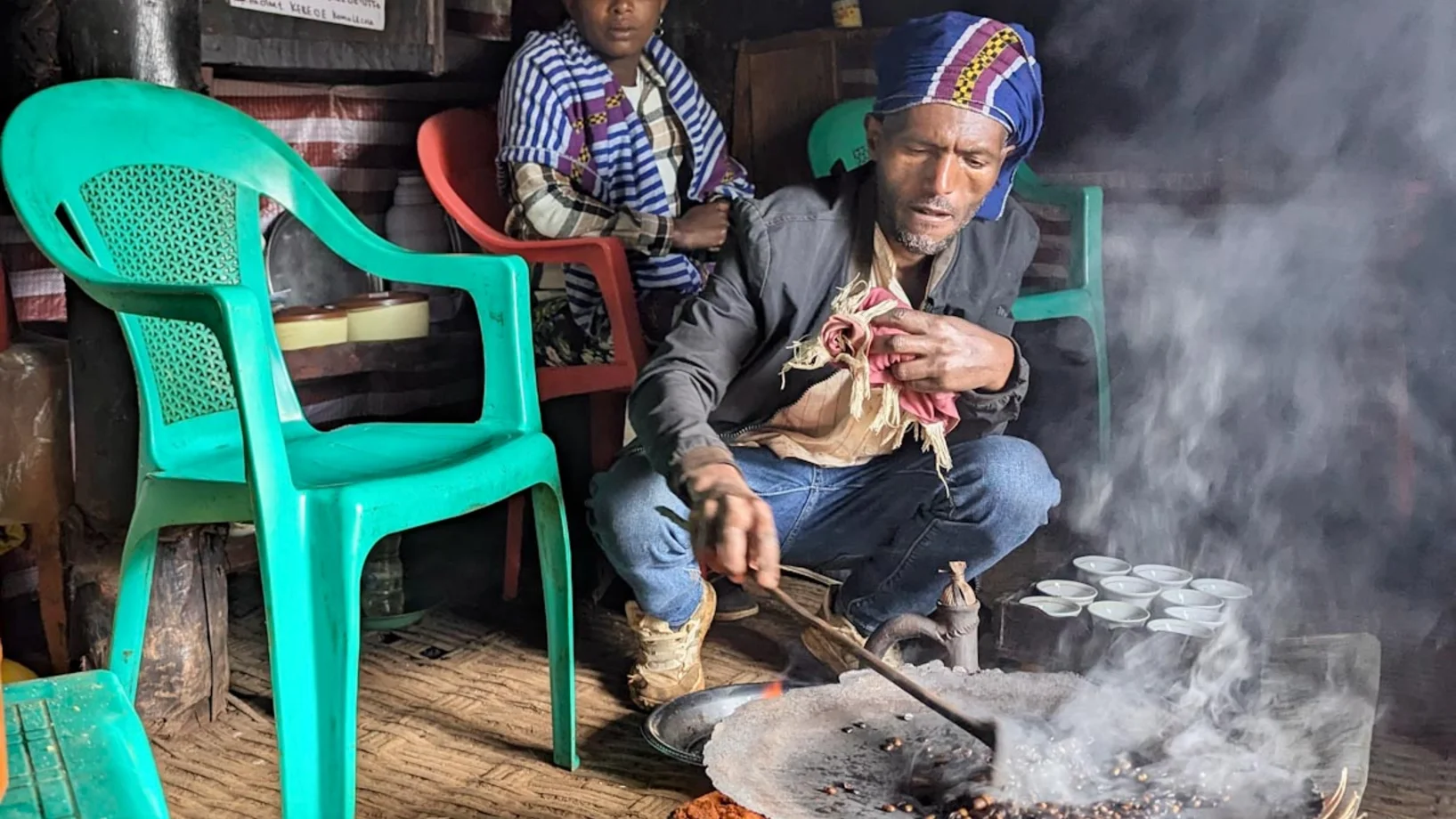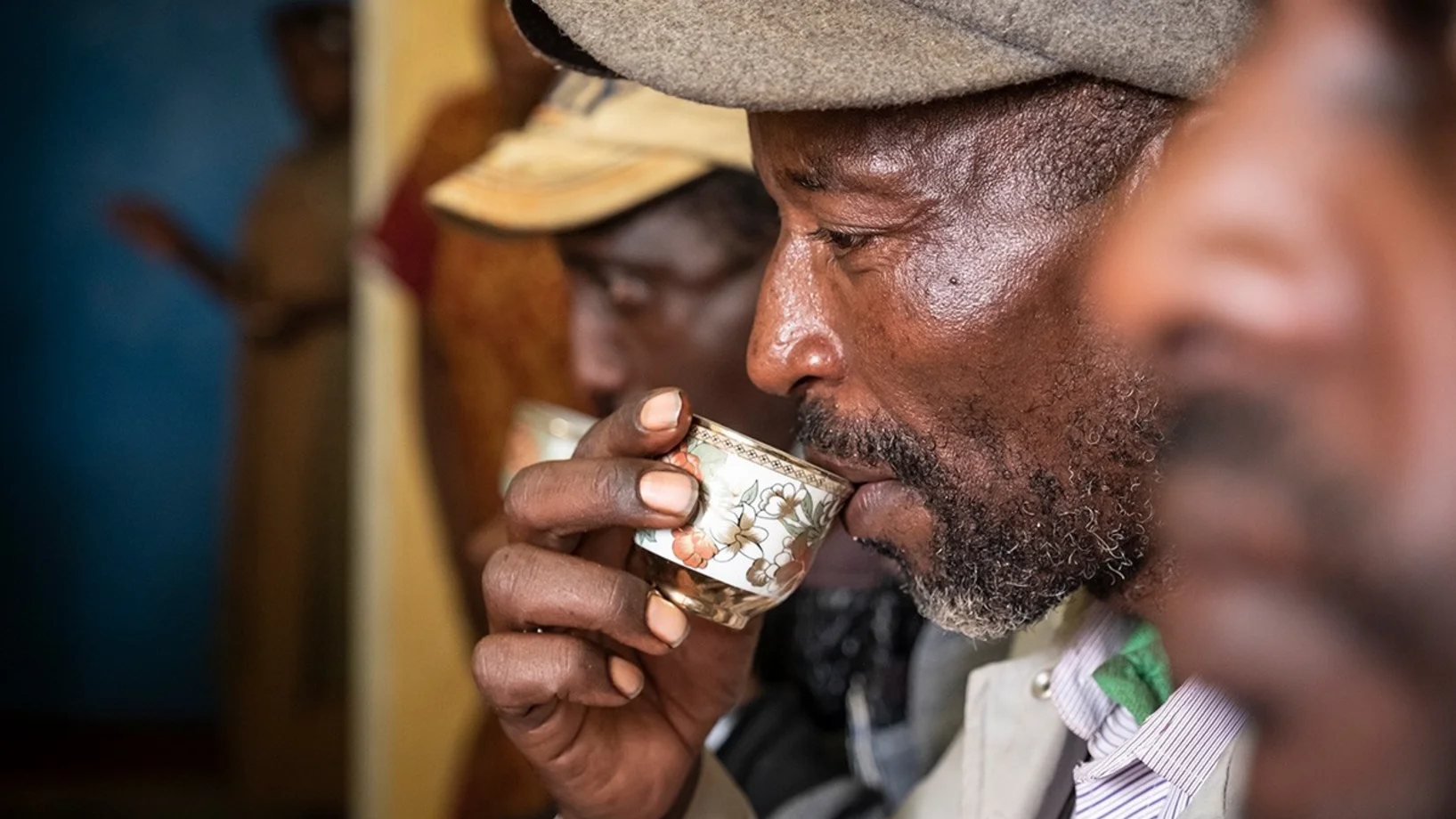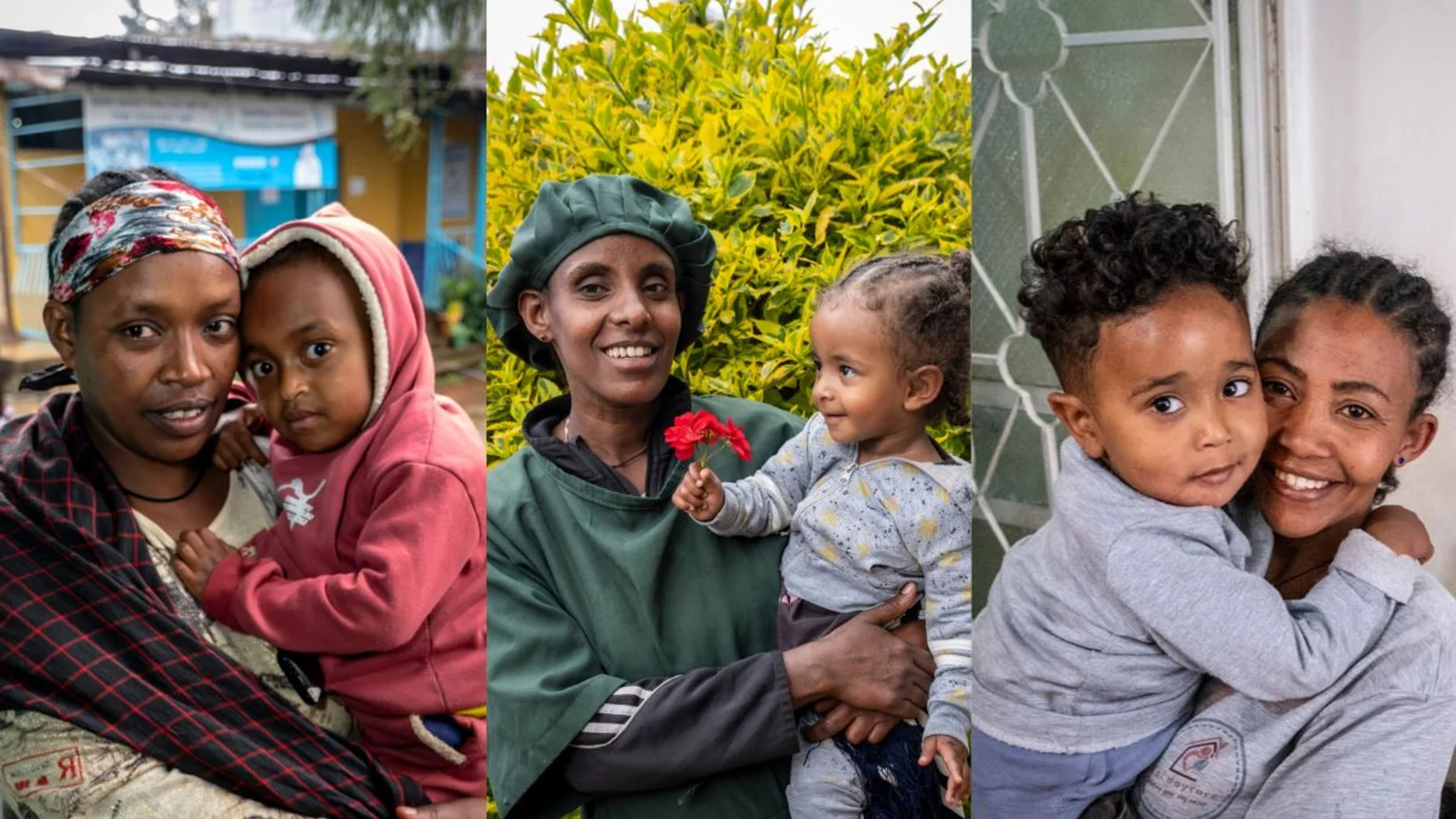Zurich/Debre Berhan, November 4, 2025 – What moves children in Africa? The Swiss aid organization Menschen für Menschen asked Ethiopian children to draw pictures from their lives and tell their stories. The pictures show what is important to them: a longing for security, community, and a future – much stronger than material dreams.
Africa is a continent of children. Around 40 percent of the population is under 15 years old. By comparison, the youngest population group in Switzerland makes up only 15 percent. "The world knows virtually nothing about the children in Africa," emphasizes Michael Kesselring, co-director of Menschen für Menschen. "What are their concerns? We wanted to find out, so we asked the children to draw pictures."
In the town of Debre Berhan, a two-hour drive north of the Ethiopian capital Addis Ababa, the Swiss foundation supports 1,800 children from the poorest families. One of these children is Rediet Mamo. The twelve-year-old lives with her brother and mother. Her father abandoned the family. The picture Rediet painted is a self-portrait: "I'm sitting at a table and writing." Writing stories is her favorite pastime.
“One of my stories is about two sisters. One readily shares her meager food with the neighbors, the other holds it back. ‘We hardly have anything ourselves,’ she says. In the end, they reach a compromise.” The girl explains that one has to think carefully about what one can give: “I like to share. But it’s about finding the right balance so that one doesn’t suffer from deprivation oneself.”
“This short story shows how, in our experience, many children in Ethiopia think,” says Kesselring. “They think a lot about justice, responsibility, and community – topics that directly shape their lives.”
While children in Ethiopia explore their world with pen and paper, their peers in Switzerland have long since turned to smartphones. Already, 60 percent of ten- to eleven-year-olds own their own device, and among twelve- to thirteen-year-olds, the figure is almost 80 percent. On weekends, teenagers spend an average of four and a half hours online. In Ethiopia, however, the internet remains inaccessible to most – 80 percent of the population has no access. For children like Rediet, drawing and writing remain the most important means of stimulating their imagination.
Undiscovered talents
In many poor families, however, creative talents remain undiscovered because of a lack of time and resources to nurture them. Menschen für Menschen therefore focuses specifically on creative activities. "Painting and writing are ways to process experiences, organize thoughts, and find a voice," says Kesselring.
This is also illustrated by the picture taken by ten-year-old Yosef Wondewossen. He drew himself and his little sister under an umbrella while fat raindrops fell on their house. "The roof is full of holes. When it rains, everything gets wet – even our blankets. Then we can't sleep," Yosef explains.
Such living conditions are a reality for many families in Ethiopia: They live in cramped quarters, often in shacks made of wood, cardboard, and corrugated iron, without sewage systems or protection from flooding. "Often, an entire family shares a single room of twelve square meters," says Kesselring. "The contrast to Switzerland could hardly be greater: There, on average, 46.6 square meters of living space are available per person." Menschen für Menschen builds simple mud houses with corrugated iron roofs in Debre Berhan for particularly needy families, providing children like Yosef with a measure of security.
Hiwot Abate, eleven years old, has painted the Ethiopian flag, with a group of children in front of it: Every morning, the students gather in the schoolyard and sing before classes begin. "I forgot the words," says the student. The reason: She was no longer allowed to go to school.
Her father explained that the family didn't even have enough money for food, let alone a school uniform. Her mother worked as a day laborer, while Hiwot looked after the two-year-old twins. "I miss school and my friends," she said. "English was my favorite subject - I wanted to speak it as well as the foreigners."
“Hiwot shows what poverty means,” explains Kesselring. “Without school, children have no future.” That’s why Menschen für Menschen involves the parents in the children’s project: mothers receive training and start-up capital for their own businesses. With the start of the new school year, Hiwot can return to school – supported by the aid organization’s program: “The children receive school supplies and uniforms, and families in need are provided with food.”
Rent or school
Biruk Fanta, eleven years old, also had to temporarily leave school. In his drawing, he depicted himself herding cattle – a memory of the time he lived with his grandmother in the countryside. In the mornings he was a student, and in the afternoons he and his friend drove oxen, goats, and sheep to the pastures. "I was a good student. I was usually first in my class," he says.
But soon the grandmother no longer had enough food for both of them. So Biruk had to return to his mother in the city. There, the teachers demanded 1000 birr (the equivalent of seven Swiss francs) from each child for chalk and supplies. His mother had already painstakingly saved the money. But then the landlord demanded the rent and threatened eviction. She paid – but there was nothing left for school.
Every day, Biruk stood by the street and watched the other children hurry to their classrooms. His mother recalls: "That sight was so painful!" With support from Menschen für Menschen, Biruk can now attend school again. "I want to learn. I want to become a teacher," he says. "I want to help children."
“It’s remarkable that the children’s pictures – apart from the wish for a sound roof – hardly mention any material desires,” Kesselring emphasizes. “While surveys show that the average person in Switzerland spends almost 300 francs on Christmas presents, the children in our project primarily wish for security and community – and better prospects for their families.” Another example is eight-year-old Dawit Getachew. His picture shows him in uniform as an Ethiopian Airlines pilot. “I see the planes in the sky,” he says. “As a pilot, I could help my parents and my three siblings.” If this dream doesn’t work out, Dawit already has a plan B: “Then I’ll become a truck driver. They get paid, too.”
Whether pilot, teacher or writer – Debre Berhan's children do not dream of gifts, but of a future they can shape themselves.
About the Menschen für Menschen Foundation
Menschen für Menschen is committed to fighting poverty and hunger. The foundation was established by the actor Karlheinz Böhm (1928–2014). In the spirit of its founder, the Swiss aid organization creates opportunities for the poorest families in Ethiopia. The aim of its work is to enable them to live with dignity in their homeland. The focus of individual projects is on women's empowerment, vocational training, microloans, child support, family planning, and agricultural development. These components are combined according to local needs and implemented with carefully selected local partners.

Download the image in HD quality and the press release as a PDF (in German) here:





